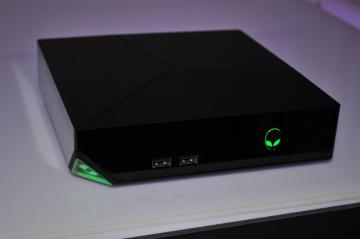One problem with putting a gaming PC in your living room is that it’s hard to get decent performance in a device that isn’t a hulking monstrosity.
That’s what Nvidia is trying to solve with its new GeForce GTX 750 and 750 Ti graphics cards. These are the first chips that use Nvidia’s “Maxwell” architecture, which doubles the performance per watt over the previous “Kepler” architecture.
The lower power consumption means you could buy a cheap desktop PC without a dedicated graphics card, and as long is it has a 300-watt power supply, you could drop in the GTX 750 or 750 Ti to turn it into a gaming machine without worrying about overheating.
More importantly, it opens the door for compact gaming PCs that can still manage 1080p graphics and over 50 frames per second in the latest games. The GTX 750 and 750 Ti support Mini-ITX enclosures with 300-watt power supplies; a quick look through Newegg gives a sense of how small these boxes can be.

The new cards seem likely to make their way into some of the Steam Machines that Valve’s hardware partners announced last month. The slickest-looking boxes, from Alienware (pictured) and Zotac, were announced with unspecified Nvidia graphics cards, and I’d be surprised if these new Maxwell chips aren’t what the companies had in mind. (Nvidia hasn’t confirmed it, but a spokesman did say that the new cards could fit in the smallest Steam Machines.)
Nvidia’s GeForce GTX 750 and 750 Ti launch today, at suggested pricing of $119 and $149, respectively. The GTX 750 Ti offers better performance with 640 CUDA cores and up to 2 GB of video memory, compared to 512 cores and 1 GB of video memory in the GTX 750.
The new cards will replace Nvidia’s GeForce GTX 650 Ti. Eventually Nvidia will replace the rest of its lineup with Maxwell-based cards, and will bring the same power-saving architecture to its laptop cards as well, but the company isn’t sharing any details yet.

